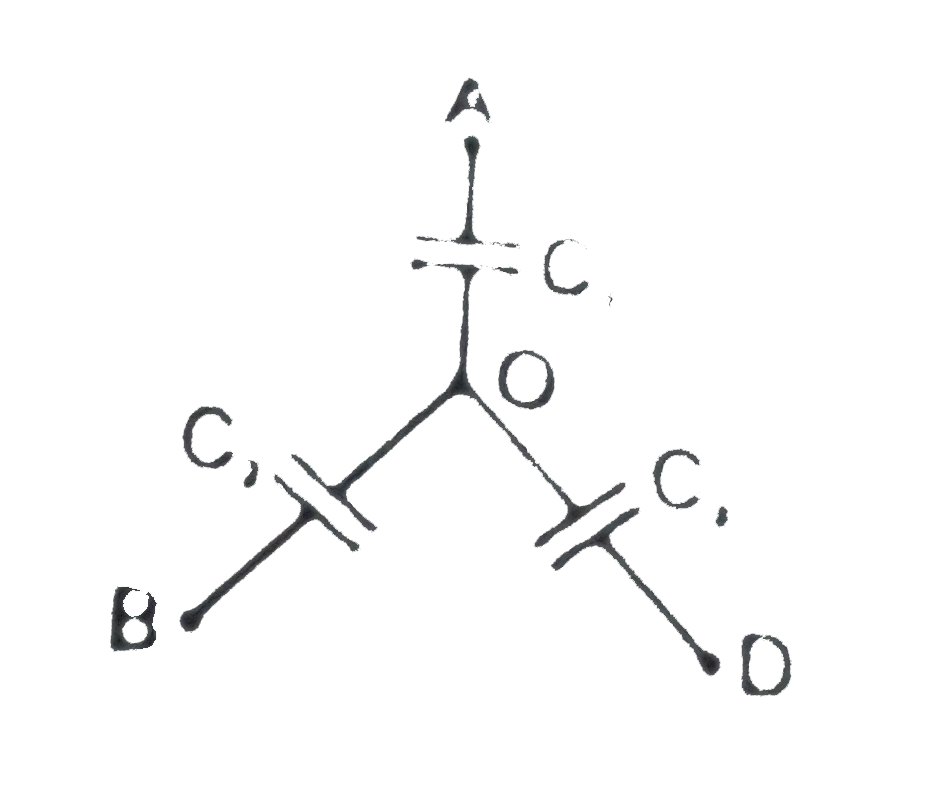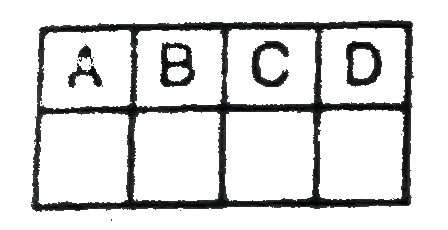(a) Assign orientation to the three chlorotoluenes with μ=1.3,1.78 and 1.9 D
To assign orientations to the three chlorotoluenes based on their dipole moments (μ = 1.3 D, 1.78 D, and 1.9 D), we can follow these steps:
Step 1: Understand the Structures of Chlorotoluenes
Chlorotoluenes can exist in three different isomeric forms based on the position of the chlorine atom relative to the methyl group on the benzene ring:
- Ortho (o-): Chlorine is adjacent to the methyl group.
- Meta (m-): Chlorine is one carbon away from the methyl group.
- Para (p-): Chlorine is directly opposite the methyl group.
Step 2: Draw the Structures
Draw the structures of the three chlorotoluenes:
1. Ortho-chlorotoluene (o-chlorotoluene):
- Structure: CH₃C₆H₄Cl (Cl at position 2)
2. Meta-chlorotoluene (m-chlorotoluene):
- Structure: CH₃C₆H₄Cl (Cl at position 3)
3. Para-chlorotoluene (p-chlorotoluene):
- Structure: CH₃C₆H₄Cl (Cl at position 4)
Step 3: Analyze the Dipole Moments
The dipole moment (μ) is influenced by the positions of the chlorine atom and the methyl group:
- In para-chlorotoluene, the dipole moments from the chlorine and the methyl group are aligned in a way that maximizes the net dipole moment, resulting in the highest dipole moment value.
- In meta-chlorotoluene, the dipole moments partially cancel each other, leading to a moderate dipole moment.
- In ortho-chlorotoluene, the steric hindrance and the close proximity of the chlorine and methyl groups lead to the lowest net dipole moment.
Step 4: Assign the Dipole Moments
Based on the analysis:
- Para-chlorotoluene has the highest dipole moment: μ = 1.9 D
- Meta-chlorotoluene has a moderate dipole moment: μ = 1.78 D
- Ortho-chlorotoluene has the lowest dipole moment: μ = 1.3 D
Step 5: Final Orientation Assignment
Thus, the orientation of the chlorotoluenes based on their dipole moments is:
- Ortho (o-): μ = 1.3 D
- Meta (m-): μ = 1.78 D
- Para (p-): μ = 1.9 D
Summary of the Order
The order of dipole moments is:
- p-chlorotoluene (1.9 D) > m-chlorotoluene (1.78 D) > o-chlorotoluene (1.3 D)
Chlorotoluenes can exist in three different isomeric forms based on the position of the chlorine atom relative to the methyl group on the benzene ring:
- Ortho (o-): Chlorine is adjacent to the methyl group.
- Meta (m-): Chlorine is one carbon away from the methyl group.
- Para (p-): Chlorine is directly opposite the methyl group.
Draw the structures of the three chlorotoluenes:
1. Ortho-chlorotoluene (o-chlorotoluene):
- Structure: CH₃C₆H₄Cl (Cl at position 2)
2. Meta-chlorotoluene (m-chlorotoluene):
- Structure: CH₃C₆H₄Cl (Cl at position 3)
3. Para-chlorotoluene (p-chlorotoluene):
- Structure: CH₃C₆H₄Cl (Cl at position 4)
The dipole moment (μ) is influenced by the positions of the chlorine atom and the methyl group:
- In para-chlorotoluene, the dipole moments from the chlorine and the methyl group are aligned in a way that maximizes the net dipole moment, resulting in the highest dipole moment value.
- In meta-chlorotoluene, the dipole moments partially cancel each other, leading to a moderate dipole moment.
- In ortho-chlorotoluene, the steric hindrance and the close proximity of the chlorine and methyl groups lead to the lowest net dipole moment.
Based on the analysis:
- Para-chlorotoluene has the highest dipole moment: μ = 1.9 D
- Meta-chlorotoluene has a moderate dipole moment: μ = 1.78 D
- Ortho-chlorotoluene has the lowest dipole moment: μ = 1.3 D
Thus, the orientation of the chlorotoluenes based on their dipole moments is:
- Ortho (o-): μ = 1.3 D
- Meta (m-): μ = 1.78 D
- Para (p-): μ = 1.9 D
The order of dipole moments is:
- p-chlorotoluene (1.9 D) > m-chlorotoluene (1.78 D) > o-chlorotoluene (1.3 D)
Topper's Solved these Questions
- CHEMICAL BONDING AND MOLECULAR STRUCTUREBOOK - CENGAGE CHEMISTRY ENGLISHCHAPTER - CHEMICAL BONDING AND MOLECULAR STRUCTUREEXERCISE - Solved Examples
36 Videos
- CHEMICAL BONDING AND MOLECULAR STRUCTUREBOOK - CENGAGE CHEMISTRY ENGLISHCHAPTER - CHEMICAL BONDING AND MOLECULAR STRUCTUREEXERCISE - Ex 2 .2 Subjective (Intermolecular Forces And H-Bonding)
7 Videos
- ATOMIC STRUCTUREBOOK - CENGAGE CHEMISTRY ENGLISHCHAPTER - ATOMIC STRUCTUREEXERCISE - Concept Applicationexercise(4.3)
19 Videos
- CHEMICAL EQUILIBRIUMBOOK - CENGAGE CHEMISTRY ENGLISHCHAPTER - CHEMICAL EQUILIBRIUMEXERCISE - Subjective type
1 Videos
Similar Questions
Three charges q1=1μC,q2=−2μC,andq3=−1μC are placed at A(0,0,0),B(−1,2,3,)andC(2,−1,1). Find the potential of the system of three charges at P(1,−2,−1).
View SolutionA In question 3, If the dipole rotates from orientation 1 to orientation 2, is the work done on the dipole by field positive, negative, or zero ?
B If, instead, the dipole rotates from the orientation 1 to orientation 4, is the work done by the field more than, less than, the same as in (a) ?
View Solution
Knowledge Check
The probability of throwing 16 in one throw with three dice is a) 1/36 b) 1/18 c)1/72 d)1/9
A136B118C172D19
Assign the position of the element having outer electronic configuration (n−2)f7(n−1)d1ns for n = 6, in the periodic table.
View SolutionA beam of light is converging towards a point I on a screen. A plane glass plate whose thickness in the direction of the beam =t , refractive index =μ , is introduced in the path of the beam. The convergence point is shifted by
A. t(1−1μ) away
B. t(1+1μ) away
C. t(1−1μ) nearer
D. t(1+1μ) nearer
View SolutionAssign a truth value to each of the following statements :
1>0∨3x8−1=23
View SolutionThree uncharged capacitors of capacitance C1=1μF,C2=2μF and C3=3μF are connected as shown in the figure. The potential of point A, B and D are 10 volt, 25 volt and 20 volt respectively. Determine the potential at point O.

View SolutionA right angled prism of refractive index μ1 is placed in a rectangular block of refractive index μ2 , which is surrounded by a medium of refractive index μ3 ,as shown in the figure . A ray of light 'e' enters the rectangular block at normal incidence . depending upon the relationship between μ1,μ2andμ3 , it takes one of the four possible paths 'ef' , 'eg' , 'eh' or 'ef'
_E01_228_Q01.png)
Match the paths in List I with conditions of refractive indices in List II and select the correct answer using the codes given below the lists:
{:("List" I , "List" II) , ( P. e rarr f , 1. mu_(1)gt sqrt(2mu_(2))) , ( Q. e rarr g , 2. mu_(2) gt mu_(1) "and" mu_(2) gt mu_(3)), ( R. e rarr f , 3. mu_(1) = mu_(2)), ( S. e rarr f , 4. mu_(2) lt mu_(1) lt sqrt(2mu_(2)) "and" mu_(2) gt mu_(3)):}<br>Codes:<br>{:( P , Q , R , S) , ((A) 2 , 3 , 1 , 4), ((B) 1 , 2 , 4 , 3) , ((C) 4 , 1 , 2 , 3) , ((D) 2, 3 , 4 , 1):}
View SolutionWhat is the probability that series circuit with three switches S1, S2and S3 with probabilities 13,12and34 respectively of functioning will work?
View Solution
Assign the number 1,2,3,4 for the formation of products A,B,C,D in appropriate box as per the given instruction .
If aliphatic nucleophilic substitution reaction then assign = 3
If aromatic nucleophilic substitution reaction then assign =4
If esterification reaction then assign = 1
if dehydration reaction then assign=2

View Solution
